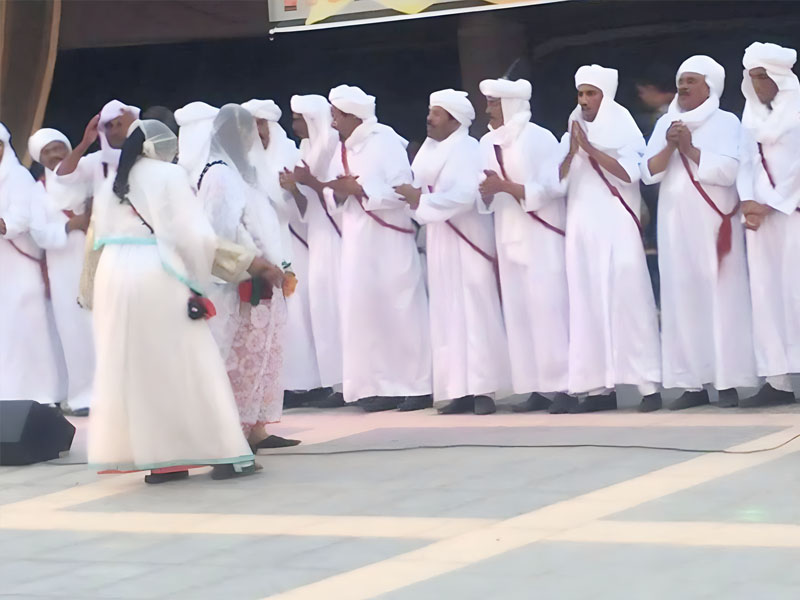Houbi Dance, a reminder of legendary times
Issue 40

By Fatima Daylami
The Houbi is a popular group folk dance performed by the people of the Ougarta region in Béni Abbès, which is in Béchar province in south-western Algeria.
Single and married men of different ages and social classes stand in a row facing one or more women. The dance leader stands in the middle of the row, and everyone dances by stamping their feet on the floor, moving their hands and chanting the word ‘Houbi’. At the start of the dance, the men are in a straight line when the dance is slow. As the rhythm intensifies, they move until they’re surrounding the female dancer or dancers. The faster the rhythm, the closer the woman gets to the men, and the dance ranges between two movements, one of which is fast and very emotional, while the other movement is slow.
Houbi is also the word that mothers use when they sing to their children. Whenever a Tamazight mother throws her child up into the air, she says “Houbi” before she catches him. The people of Ougarta told us that the male dancers use the word to encourage the female dancer to dance.
This connection with the Amazigh is not strange, because the dance is very old. No musical instruments are used; the rhythm is created by clapping one’s hands and stamping one’s feet.
The Houbi dance is performed outside, not at home; the people of Ougarta continue to follow their primitive customs and rituals. Everyone, including children, gathers in an area designated for weddings and celebrations (the place is known as ‘Habis’) to perform the dance.
Houbi is performed at specific times and on special occasions such as circumcisions, weddings, and before people leave for a pilgrimage. However, weddings are the most popular ceremonies because ‘boys and girls leave childhood behind and knock on the door that leads to the world of adults’.







































































